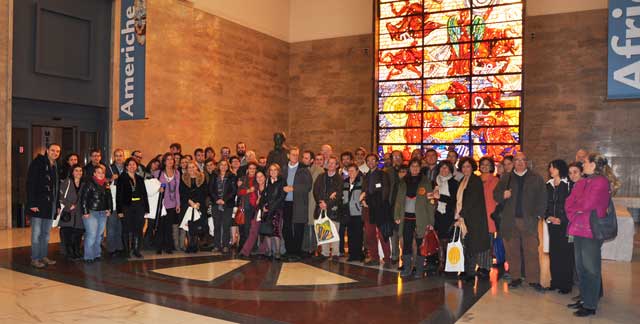Conference Reports
150 Years of Prehistory and Protohistory in Italy
150 Years of Prehistory and Protohistory in Italy,
November 23 to 26, 2011
In 1861 Italy began its modern history of unified nation. During 2011 there were many congresses and exhibitions to celebrate the 150th of this seminal date in our history.
One of these was the Congress 150 Years of Prehistory and Protohistory in Italy, organized by the Italian Institute for Prehistory and Protohistory and held in Rome, in the Preistorical and Etnographical Museum Luigi Pigorini (the name of one of the forefathers of Italian prehistorical research) from November 23 to November 26.
The Congress was the annual meeting of the Istituto Italiano di Preistoria e Protostoria (IIPP), a "union" of all the Italian researchers of prehistory and protohistory (University, Museums and State Antiquity Offices), founded in Florence in 1954.
The Scientific Committee, coordinated by the present writer, was formed by Raffaele De Marinis (president of the IIPP), Anna Maria Bietti Sestieri, Luigi La Rocca, Marco Pacciarelli, Michele Cupitò, Paolo Gambassini, Renata Grifoni Cremonesi, Massimo Tarantini, Andrea De Pascale, Filippo Maria Gambari.
We organized the congress into 4 sessions:
- From the beginning to the Bologna Congress of Prehistoric Archaeology and Anthropology of 1871 (the first big international prehistory event to be held in Italy, with the participation of the famous scholars, like Worsaae and De Mortillet), a period of well known excellence of our "paletnologia".
- From 1871 to 1925, the year of the death of Pigorini, a period in which he was the unrivalled master of pre- and protohistorical research (save for a group of scholars engaged in Palaeolithic research), being at the same time the only professor of prehistory, the Director of Rome Museum, and the founder and main protagonist of the official review, the Bullettino di Paletnologia.
- From 1925 to 1962, the year of Rome IUSSP Congress, a transition phase that we can divide between the years of Fascism, during which the regime presided politically over all Classical archaeology, and the post-war period, dominated by the great scholar Luigi Bernabè Brea.
- From 1962 to the present, a period still difficult to analyse, characterized by impressive progress in field methods and theoretical acquisitions.
More than 100 papers and almost the same number of posters were presented, many of them from young scholars. These comprised a vivid panorama of the evolution of the discipline during these 150 years, and especially incorporated the contributions of minor scholars, who were active after the political unification of 1861 or after the Second World War. Of special significance were papers in the third session, that focused on a period, that only now, more than sixty years after the fall of Fascism, we can begin to study without ideological prejudices.
Special foreign guests comprised: Alain Schnapp, who spoke about the period between XVII and early XIX century; Marc-Antoine Kaeser, who detailed contacts between north Italian and foreign scholars in the mid-nineteenth century; and Margarita Diaz-Andreu, who offered an international framework for the period between the two World Wars.
The conference was a great public success, and is still having an impact, with its many reviews demonstrating how the history of archaeology in Italy is beginning to attain the status of an important discipline.

Congress participants around their forefather, Luigi Pigorini.


